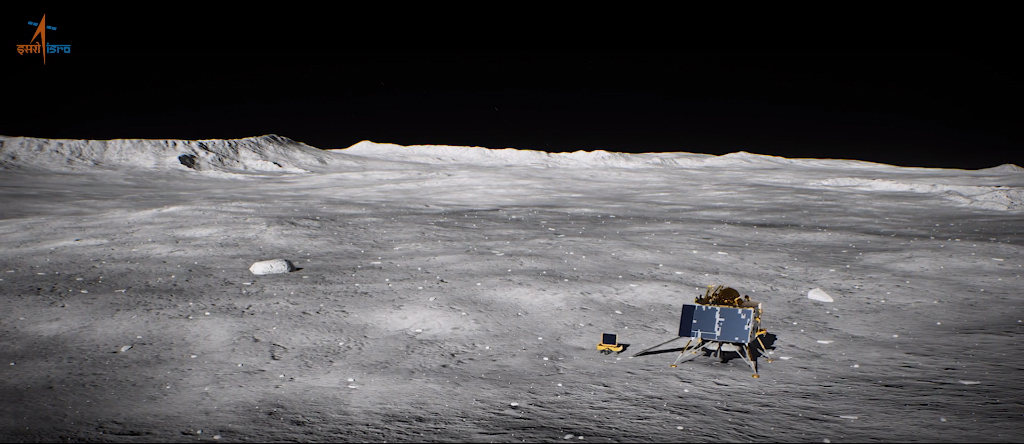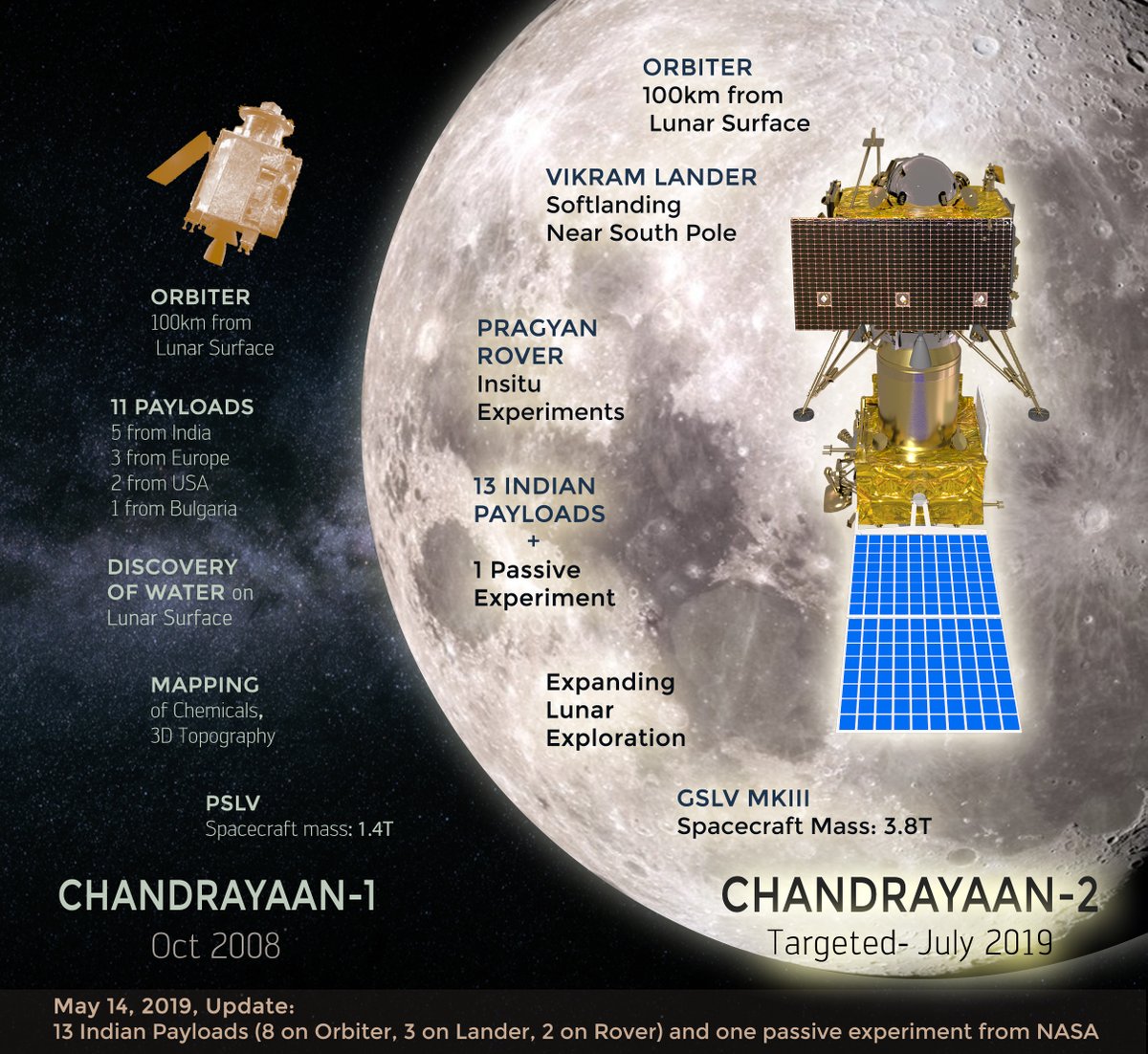
India Gearing Up to Launch 2nd Moon Mission This Weekend
The ambitious Chandrayaan-2 mission is scheduled to launch Sunday evening (July 14).

India is getting ready for another moon mission.
The Indian Space Research Organization's (ISRO) ambitious Chandrayaan-2 lunar mission is scheduled to launch Sunday (July 14) from the Satish Dhawan Space Centre in Sriharikota at 5:21 p.m. EDT (2121 GMT; 2:51 a.m. July 15 local time).
Chandrayaan-2 consists of an orbiter, a lander called Vikram and a rover known as Pragyan. If all goes according to plan, touchdown will occur Sept. 6 on a high plain between two craters, Manzinus C and Simpelius N, about 70 degrees south of the equator.
Related: India's Long Lost Moon Probe Found by NASA Radar
The moon's polar regions are intriguing to scientists and exploration advocates because water ice is abundant there, on the floors of permanently shadowed craters. Such "lunar cold traps" contain a fossil record of the early solar system and also harbor a precious resource that could aid human exploration of Earth's nearest neighbor.
Chandrayaan-2 will launch atop a three-stage GSLV Mk-III rocket, India's most powerful booster. The GSLV Mk-III is capable of lofting 4-ton satellites to Geosynchronous Transfer Orbit (GTO), ISRO officials have said.

Integrated module
Chandrayaan-2 is an advanced version of India's successful Chandrayaan-1 mission, which launched in October 2008. Chandrayaan-1 delivered a probe to lunar orbit and sent an impactor barreling into the object's surface. The mission is best known for detecting evidence of water on the moon.
Get the Space.com Newsletter
Breaking space news, the latest updates on rocket launches, skywatching events and more!
Chandrayaan-2's orbiter and lander modules will be stacked together as an integrated module and accommodated inside the GSLV MK-III launch vehicle. The Pragyan rover is housed inside the lander.
After launch into Earth orbit, the integrated module will reach the moon using an orbiter propulsion module. Subsequently, the lander will separate from the orbiter and touch down at the predetermined site close to the lunar south pole.
Mission life
The Chandrayaan-2 orbiter will be capable of communicating with the Indian Deep Space Network (IDSN) on Earth as well as the Vikram lander on the surface of the moon. The mission life of the orbiter is one year, and it will be placed in a 62-mile-high (100 kilometers) circular polar orbit.
The lander is named after Vikram A. Sarabhai, the father of the Indian space program. It is designed to function for one lunar day, which is equivalent to about 14 Earth days.
The six-wheeled Pragyan rover, whose name means "wisdom" in Sanskrit, is solar-powered and capable of traveling up to 1,640 feet (500 meters) on the lunar surface. It can communicate only with the Vikram lander.
Experiments
Chandrayaan-2 carries a total of 13 Indian payloads — eight on the orbiter, three on the lander and two on the rover. In addition, the Vikram lander will tote one passive experiment from NASA called the Laser Retroreflector Array (LRA) for Lunar Landers.
This LRA is the same design as the one carried aboard Israel’s Beresheet moon lander, which crashed during its touchdown attempt in April.
The LRA is a mirrored device that reflects laser signals to help mission team members pinpoint where a lander is as well as precisely calculate the moon's distance from Earth.
- The 21 Most Marvelous Moon Missions of All Time
- How NASA Scrambled to Add Science Experiment to India's Moon Probe
- ISRO: The Indian Space Research Organization
Leonard David is author of the recently released book, "Moon Rush: The New Space Race" published by National Geographic in May 2019. A longtime writer for Space.com, David has been reporting on the space industry for more than five decades. Follow us on Twitter @Spacedotcom or Facebook.
Join our Space Forums to keep talking space on the latest missions, night sky and more! And if you have a news tip, correction or comment, let us know at: community@space.com.

Leonard David is an award-winning space journalist who has been reporting on space activities for more than 50 years. Currently writing as Space.com's Space Insider Columnist among his other projects, Leonard has authored numerous books on space exploration, Mars missions and more, with his latest being "Moon Rush: The New Space Race" published in 2019 by National Geographic. He also wrote "Mars: Our Future on the Red Planet" released in 2016 by National Geographic. Leonard has served as a correspondent for SpaceNews, Scientific American and Aerospace America for the AIAA. He has received many awards, including the first Ordway Award for Sustained Excellence in Spaceflight History in 2015 at the AAS Wernher von Braun Memorial Symposium. You can find out Leonard's latest project at his website and on Twitter.









